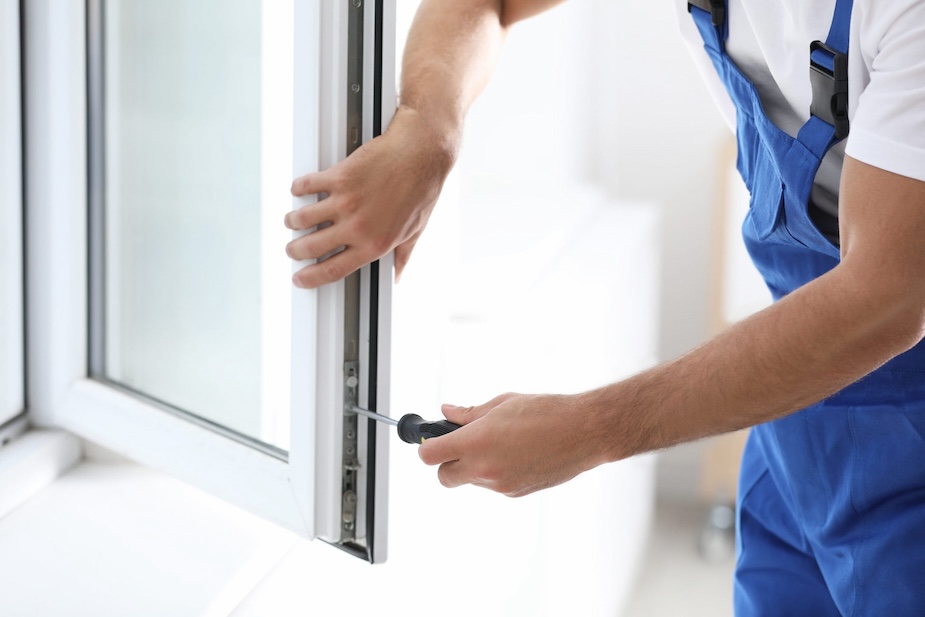Ten Things You Need To Learn About Lock Replacement
페이지 정보

본문
 Door Lock replacement window lock window locks repair Locks (Articlescad.Com) - What Are the Different Parts of a Door Lock?
Door Lock replacement window lock window locks repair Locks (Articlescad.Com) - What Are the Different Parts of a Door Lock?Door locks that aren't working properly can make your home an easy target for burglars. Change your locks is a cost-effective method to increase security without making your door inaccessible.
A lot of locks come with a cardboard template which you can wrap around the edges of your door to ensure it is properly fitted. This will stop you from buying the wrong lock.
The Cylinder
The cylinder is the primary element of a door's mechanical lock. It is made up of a set of spring-loaded pins that hold the door shut even when no key is inserted into the hole. When the key is inserted into the doorknob, the uneven edge pushes up onto the pins in the cylinder, which allows them to be inserted into their proper place. When the pins are in place, they allow for the bolt (also called the latch) to move forward, connecting to the inside of your doors.
The bolt extends from the cylinder and then into the box, a hole is then drilled into the door frame. The box is designed to fit the bolt snugly, so that it can't be easily pulled open. A clip spring keeps the bolt in place when the door is closed. When you turn the handle, a spindle is engineered to rotate inside the cylinder. When it's done rotating the slanted side of the bolt is retracted into the door frame. The bolt rests on the carved-out area of the doorframe and locks the door until you have to open it.
A faceplate is a metal plate that is attached to the inside of your door, either side of the deadbolt hole. Its purpose is to safeguard your locking mechanism from damage that could result from the repeated removal and insertion of your knob. If you're installing a new lock, make sure that the faceplate is aligned with the hole in your door frame and that it's securely secured to the faceplate and the bore of the latch.
If you're replacing the door lock, make sure that the deadbolt fits correctly by sliding it into the strike plate's opening hole. After that then screw the strikeplate as well as the the lock's core into the appropriate position. Be cautious not to over-tighten, as this can cause damage to the latch and stop it from sitting in its groove correctly. You can test your new lock by rotating the key with the lock in the locked position. If you find any issues, such as loose latches or a loud deadbolt, it's time for you to replace your old lock with a new lock.
The Faceplate
A faceplate is an oversized flat plate that is attached to the headstock of the lathe to support the workpiece. It has a number of screw holes through it where the screw thread passes from the back and winds into the wood. Faceplates can accommodate many different shapes but in general they must be positioned, fixed and balanced, which are not easy tasks compared to simplicity of an chuck.
A typical faceplate is equipped with a number of mounting holes, in this instance three holes are positioned at 120Adeg spacing to receive the screws for mounting the workpiece 18 of FIG. 2. These screw holes are machined through an interchangeable insert 16 or directly into the body of the faceplate. A portion between the faceplate is a stepped area that serves as an index mark to identify a specific place on the blank of the workpiece.
The stepping area is resistant to abrasion so that the fastener will not cause damage to the chisel that is that is used to cut into it. The surface of the body of the faceplate has distinct properties compared to the surrounding region and machining into this region alerts the turner to possible contact with the fastener and gives the turner enough time to react.
Screws used to hold a faceplate into place must be of a size that can fit inside the screw hole, leaving only a little free play. When the screw is firmly seated onto the glue block there should be no space between it. This can allow the block to rotate to move. It is also a good idea to use a larger gauge screw because it will be more secure on the faceplate. The screw should pass through the middle of the screwhole to avoid the possibility that a screwhead will be in contact with the workpiece.
The Strike Plate
The strike plate is one of the most vital components of your door lock. The strike plate prevents the bolt from slipping when you close the front door. The strike plate is also an element that can help increase the strength of the lock and prevent burglars from entering using force against the jamb and latch bolt.
A strike plate is a heavy metal plate that is inserted into the doorjamb (the vertical part of the frame) with a hole that allows the deadbolt or latch to be able to pass through. When the cylinder turns, the bolt is released from the strike plate and into the doorjamb and keeps it closed.
There are various kinds of strike plates available according to your requirements. If you require a strikeplate to fit your lock, the information will list it. The majority of strike plates are identical and work with standard latches as well as locks.
Standard strike plates are typically equipped with ovular screws and the "C"-shaped piece that acts as washer. They are typically employed on doors with corner rounded edges. They come in different sizes to fit the door.
To increase security, you can opt for strike plates that have no lip and is made specifically for deadbolts. This is a good choice for areas that require to be secured quickly, like stairwells. It's also a great option to secure equipment or documents in your home.
Installing a box strikeplate will also increase the security of your doors. It gives more thickness to the strike plate, and also strengthens it. This makes it much harder to break into the door through the latch or deadbolt. It's often required for commercial doors with a security lock.
If your strike plate is misaligned with the latch bolt Try spraying it with a high-quality lock lubricant. If this doesn't work, then you'll need to adjust the strike plate by drilling new holes in the screw and widening the catch hole. Be careful not to make numerous adjustments to the strike plate, since repeated and extreme modifications can weaken the plate to the point that it's no more effective.
The Deadbolt
A deadbolt lock is a sturdy bolt made of steel that ties your door to the frame of the doorjamb. In contrast to spring latches used in doorknobs which can be tied (jimmied) with credit cards or professional tools like latch slips, a deadbolt is locked using the use of a key, thumb turn, or electronically (in the case of keyless and smart deadbolts). They are more user-friendly and require less maintenance. They also provide better protection against forced entry techniques like kick-ins.
The bolt extends from an socket in the doorjamb, which is reinforced by a strike plate for additional security. The bolt should have a minimum of 1 inch in length to make it harder to remove the door. Also, you should select deadbolts that have an ANSI rating, which indicates how secure the lock is.
The strike plate also helps to hold the cylinder in place. There should be three holes through the bolt. One located in the middle connects the facepiece and the cylinder. The other two are to the left and right of the central hole. The screws are inserted into these holes to connect the bolt and cylinder. The screws should be included with the new deadbolt. Some locks have decorative covers which are attached to the facepieces. Check the instructions of the manufacturer to ensure that they are installed correctly.
Choosing the right lock for your home involves contemplating your lifestyle and the security level you need. Single deadbolts made of cylinders are the traditional lock option and are available on a wide range of exterior doors. Keyless deadbolts may be more secure but more difficult to use. Smart deadbolts allow you to lock and unlock the bolt by voice commands or an mobile app.
A professional locksmith will assist you in determining what kind of lock is appropriate for your home. They will install or replace window locks upvc the lock. The upgrade of your front door lock is a cost-effective method to increase the security of your home. Consider installing a double-cylinder or reversible deadbolt to the inside of your front door to provide an extra layer of security.
- 이전글You'll Be Unable To Guess Tilt Turn Window Handles's Secrets 25.01.30
- 다음글Undisputed Proof You Need Asbestos Litigation 25.01.30
댓글목록
등록된 댓글이 없습니다.
